In the resplendent realm of Carnatic music, the opening strains of a concert represent far more than a prelude — they serve as a vibrant tapestry woven with emotions, lyrical beauty and creative expression. As the curtains rise and the first song fills the air, it is not just a melody; it is the beginning of a harmonious journey, an invitation to savour the symphony of life through the artistry of sound.
The greats of yesteryears — Ariyakudi Ramanuja Iyengar, Musiri Subramania Iyer, and M.S. Subbulakshmi — each had a signature song that kicked off their musical sojourns. These maestros, like painters with a pristine canvas, carefully selected their inaugural strokes. For some, it was the spirited varnams, adhering to classical structure. For some others, a heartfelt rendering of prayer to gods and gurus or soul-stirring swarajatis, showcasing their virtuosity. Choosing the first song is like opening the doors to the artiste’s musical universe.
Yesteryear musician Musiri Subramania Iyer often commenced his concerts with Subbarama Dikshitar’s pada varnam ‘Entaninne delupudura’ in Khamas, distinguished by its length and verses for the swaras in charanam, unlike a typical tana varnam.
Madurai Mani Iyer.
| Photo Credit:
The Hindu Archives
On the other hand, the inimitable Madurai Mani Iyer frequently opened with Muthuswami Dikshitar’s ‘vathapi ganapatim’ in Hamsadhwani. Compositions in the Hamsadhwani raga, known for its swift and playful notes, establish an exuberant ambience.
Musiri Subramanya Iyer.
| Photo Credit:
THE Hindu Archives
The selection of the first song is a contemplative process. Ariyakudi Ramanuja Iyengar, credited as the architect of the present-day concert format, usually began his concerts with the Kanada ata tala varnam ‘Neranammiti’, a composition of his guru ‘Poochi’ Srinivasa Iyengar. However, the guru frequently favoured the Bhairavi raga ata tala varnam ‘Viribhoni’ for his own performances.
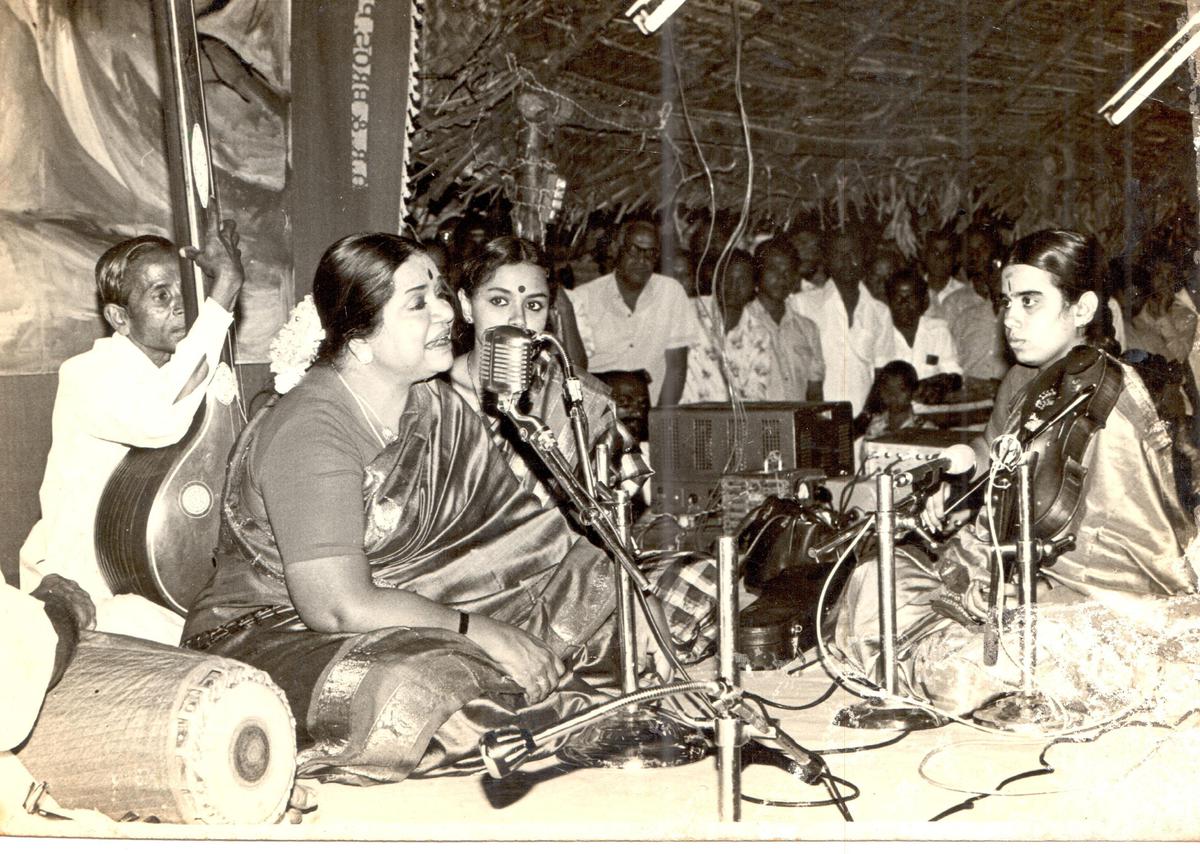
M.L. Vasanthakumari at a concert with disciples Sudha Raghunathan and A. Kanyakumari (violin).
| Photo Credit:
The Hindu Archives
M.L. Vasanthakumari, known for her charm and grace, had a gamut of well-known varnams in ragas from like Mohanam and Navaragamalika varnam to sprightly kritis such as Gopalakrishna Bharati’s ‘Sivakama sundari’ (Jaganmohini). Revered for popularising the compositions of Purandaradasa, MLV’s ‘Jaya jaya jaya janakikantha’ (Nattai) was a much-anticipated opening number among her fans. Emulating her guru, Sudha Ragunathan presents varnams in ragas such as Vasantha and Kedaragowla, as well as the weighty Bhairavi and Thodi.
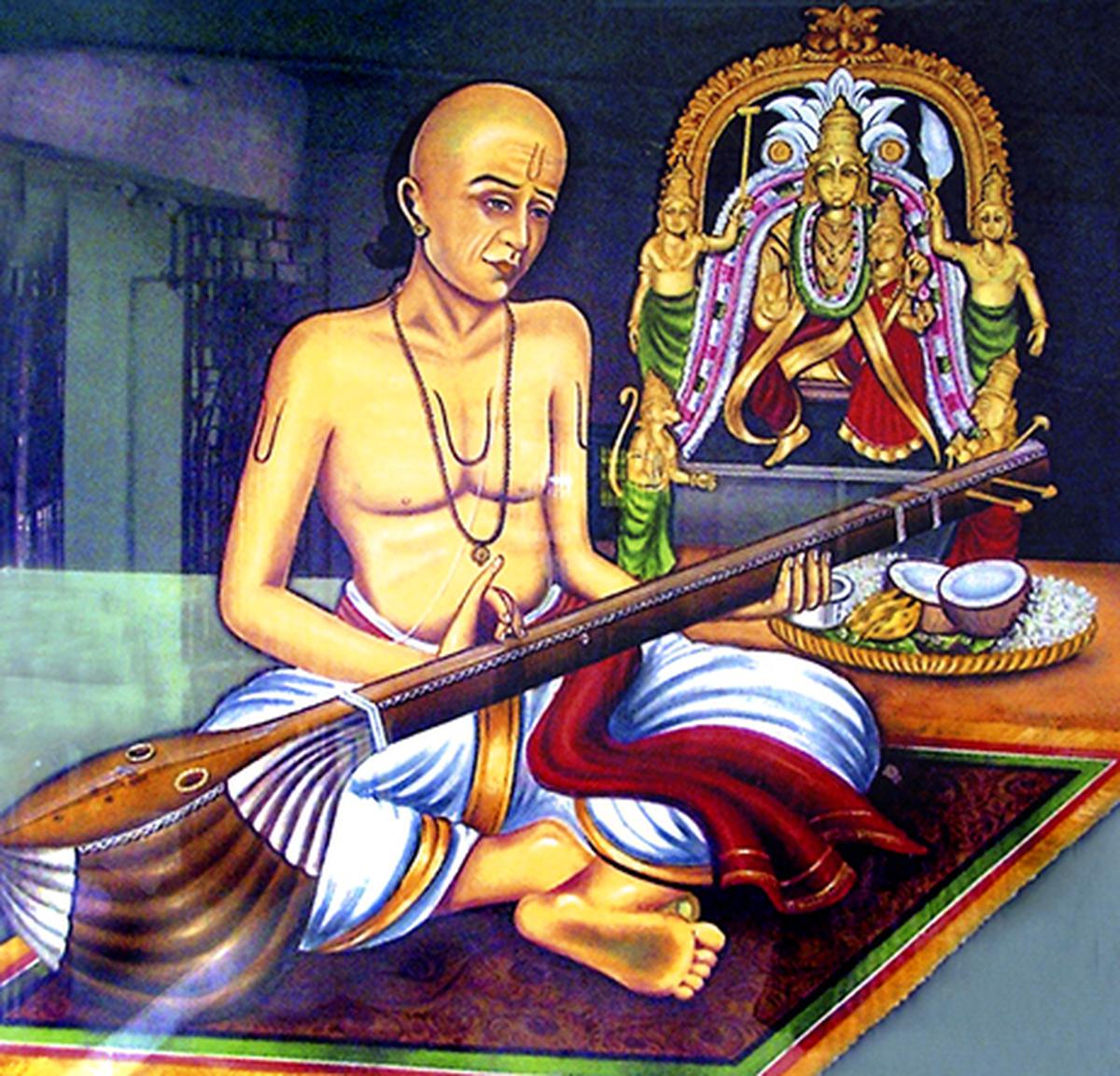
Tyagaraja’s varnams and kritis are popular opening compositions.
| Photo Credit:
The Hindu Archives
“Well begun is half done,” says senior musician Neyveli Santhanagopalan. “Though our music generally needs no introduction to regular listeners, starting with small doses, progressing gradually and culminating in a lingering conclusion are crucial.” He extols tana varnams with more musical elements than lyrics as a perfect opener. Recommending the old adage ‘adhi Nattai anthye Surutti,’ for beginners, he suggests ragas such as Mayamalavagowla, Kedaram, and compositions on Ganesha, such as the beautiful Bangala composition ‘Giriraja suta tanaya,’ also make excellent starters.
For major ragas like Thodi and Bhairavi chosen for varnams, does a composition like ‘Kaddanu variki’ in Thodi fit as the opening slot of a concert? “It can, but what can one present subsequently after such magnificent kritis?” questions Santhanagopalan.
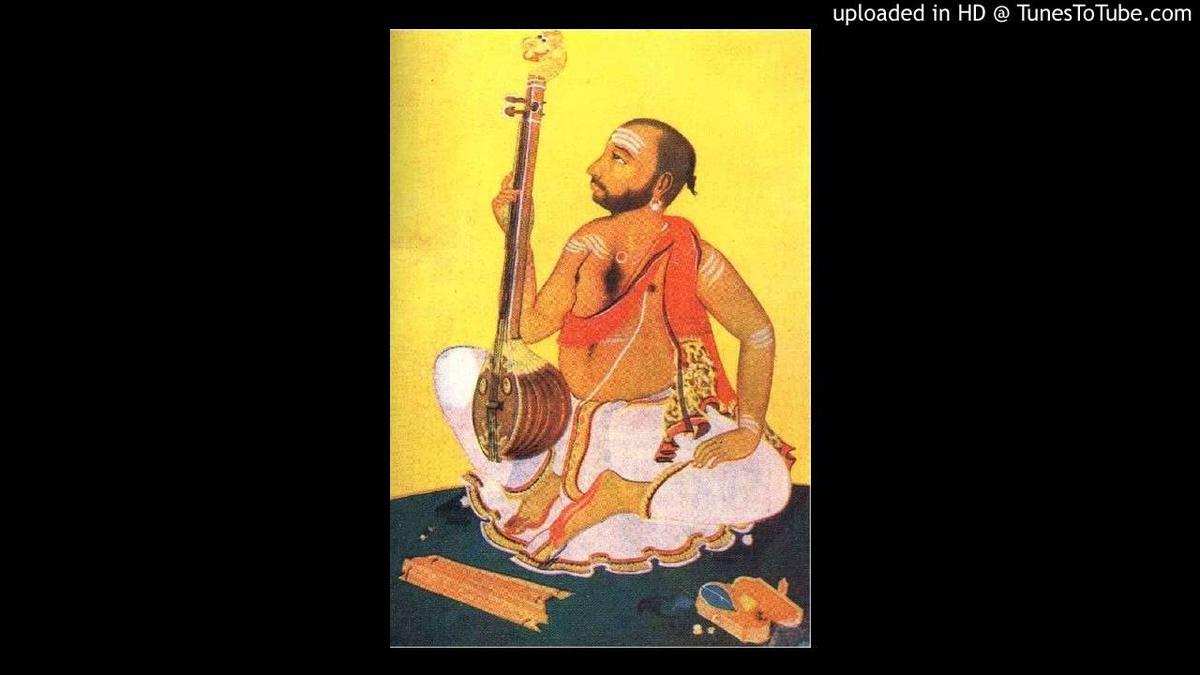
Syama Sastri’s Swarajatis are also rendered as the opening piece.
| Photo Credit:
The Hindu Archives
Amritha Murali, who experiments with a spectrum of compositions from varnams to grand compositions such as Tyagaraja’s ‘Swara raga sudha’ (Sankarabharanam) and Syama Sastri’s swarajati ‘Rave himagiri kumari’ (Thodi) as the first numbers in concerts, concurs. “Thematic concerts demand a different approach, aligning all kritis with the theme. Generally, besides varnams, kritis like ‘Pancha mathanga mukha’ (Malahari) and ‘Himachala tanaya’ (Ananda Bhairavi) with a few rounds of kalpanaswaras can also make a vibrant start,” she says. “The ambience and the musician’s mood determine the choice. Also, the artistes should know how to make the piece impressive, which is a challenge by itself.”
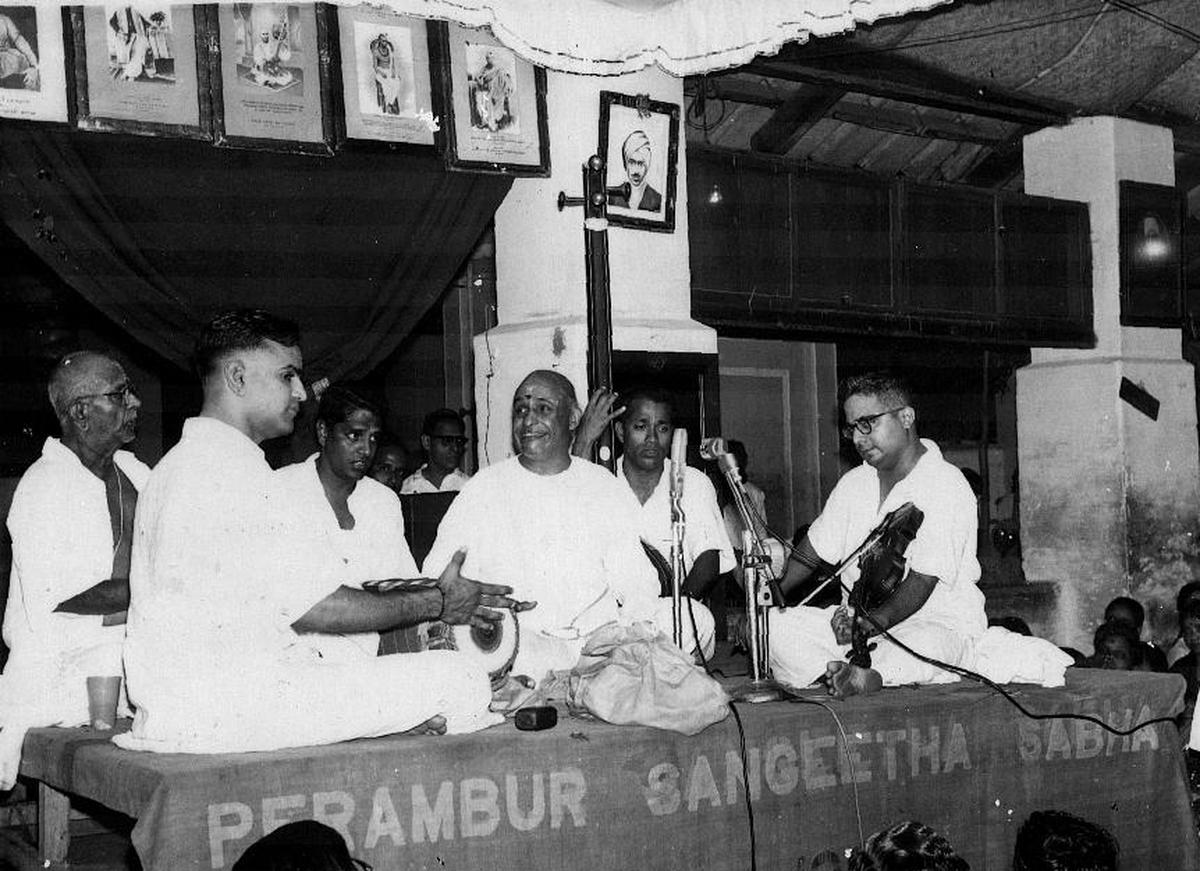
Semmangudi Srinivasa Iyer prefered to open his concerts with the Swati Tirunal composition ‘Deva deva kalayamite’ in raga Mayamalavagowla.
| Photo Credit:
The HIndu Archives
“Commencing a concert with a varnam, especially in pleasant ragas, is the best-ever,” remarks Shertalai Renganatha Sharma, who thoughtfully designs his concerts with a blend of kritis of his choice, audience expectations, and a few lesser-known compositions in vivadi ragas. “I admire Lalgudi Jayaraman’s varnams. It is gratifying to start with Nalinakanti, Valaji, or Bahudari varnams of the maestro,” he shares. “My father and guru Shertalai Narayana Iyer, a disciple of Semmangudi Srinivasa Iyer has mentioned how the doyen would start his concerts with the Mayamalavagowla composition ‘Deva deva kalayami’ of Swati Tirunal. Mayamalavagowla is also my choice, as the raga comes off as an auspicious one. Ragas with antara gandharam and kakali nishadam are pleasant choices to commence a concert with. He opines that an intricate and monumental composition has its rightful place in a concert rather than serving as an opening song.
“I am slightly superstitious about commencing my concerts with a Ganapati stuti,” admits Gayathri Venkataraghavan, who creates a striking atmosphere with bright presentation featuring songs in varied tempos in her concerts. “I am particular about an auspicious start. I lean towards ragas with all or most notes for the starting number and avoid ragas without panchamam.” To her, a concert should radiate vibrancy from the get-go, especially as concert durations have shortened. “Stalwarts of the yesteryears did a substantial preparation before ascending the stage, leaving no room for warming-up once on stage.” Gayathri too has ventured into beginning her concerts with kritis such as Dikshitar’s ‘Sri dakshinamurthe’ (Sankarabharanam). “With intimate audiences, every aspect including a raga alapana in the beginning, creates an instant connect,” she says.
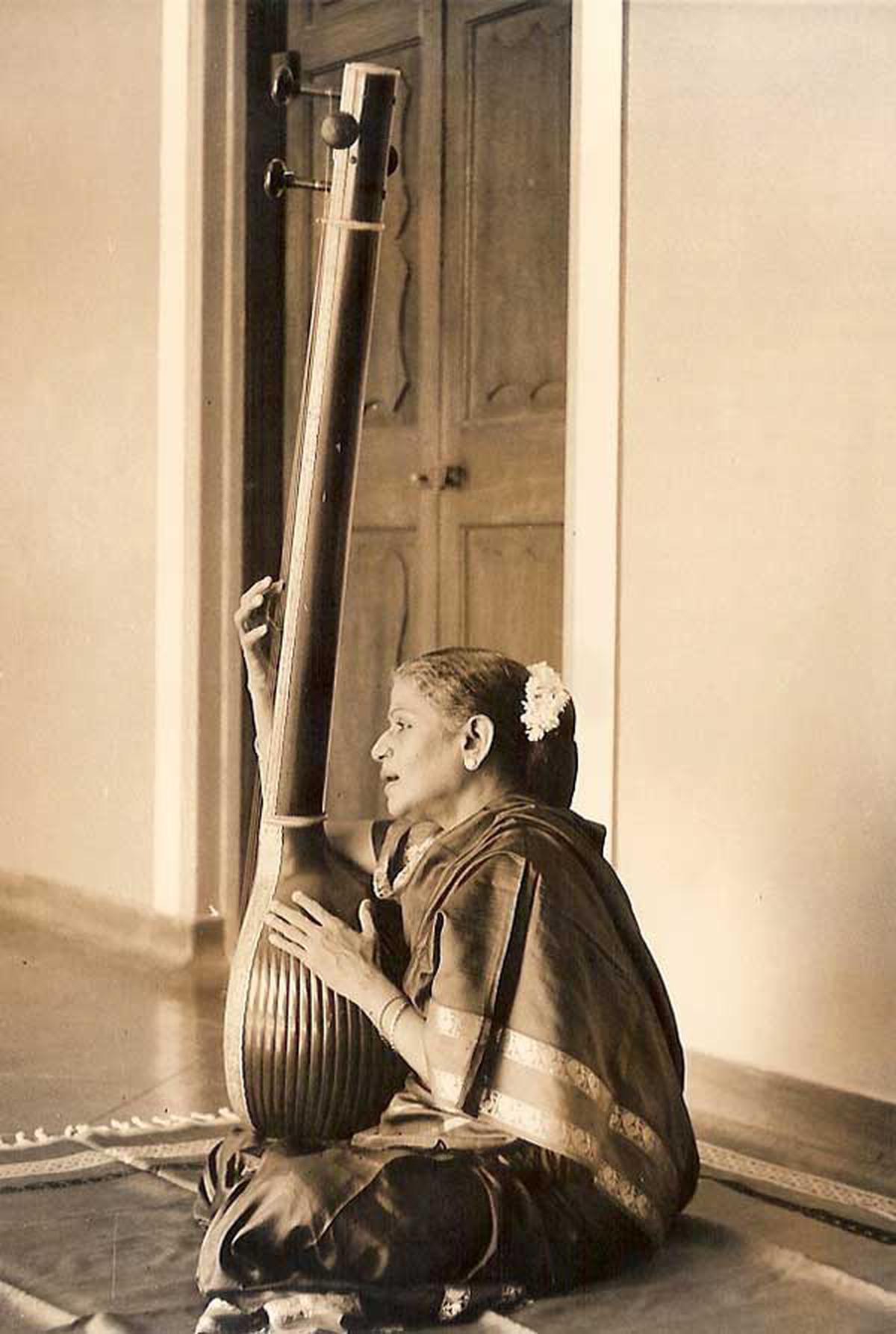
M.S. Subbulakshmi usually began with a Dakshinamurthy stotram.
| Photo Credit:
The Hindu Archives
According to senior veena vidushi Kalyani Ganesan, instrumentalists should opt for a well-known composition to grab the attention on opening a concert. “Earlier, the first number served as a sound check, setting up the team for an enhanced listening experience. Times have changed. The impact created by first song when played with the sahitya swaroopam intact, shapes the rest of the concert. It is an emblem of their instrument’s prowess too. Often, the opening song is contextual, coinciding with special days for deities,” she explains. Delving into the significance of tanam in a veena concert, she talks about how vidwans of the Karaikudi school who often commenced their concerts with ‘Sarasiruhasana priye’ in Nattai to incorporate a ghana raga tanam later in the concert. She suggests that performers opt for ragas such as Yadukulakamboji, Dhanyasi or Ahiri, suitable for instruments to display their skill and gnanam. However, familiarity in the initial phase is important to retain listeners’ interest.
Young Kalyanapuram Aravind goes a step further and says that the varnam requires a fully warmed-up voice. “The gait of the varnam directly influences the tonality and pace of the entire concert. Short and brisk Rupaka tala kritis in oru kalai will give a spirited start.” He shares instances of starting his concerts with compositions such as ‘O jagadamba’ (Ananda Bhairavi) or ‘Swara raga sudha’ and ‘Enduku peddala,’ both in Sankarabharanam, delivered slightly faster with a few rounds of kalpanaswaras to crown the rendition. “With such compositions, the singer delves into the depth of music. Pancharatna kritis are also excellent starters with swara sahityams,” he adds.
Santhanagopalan says that after gaining a level of maturity, a singer can deviate from the norm and the audience would accept it!
Kalyani Ganesan cites the exmaple of the ‘cuckoo song’ by veena exponent Chittibabu. Aravind recalls listening to his guru, Madurai T.N. Seshagopalan, during an entire ‘December season,’ starting his concerts with grand compositions such as ‘Sri rajagopala’ (Saveri) or ‘Meenakshi memudam’ (Gamakakriya) preceded by elaborate raga alapanas.
Now, is the opening number about warming up, creating an impressive start, or invoking sentiments? It encompasses all these aspects and more. It is about the artiste’s finesse, invoking emotions that resonate with the audience’s heartstrings, setting the stage for an unforgettable auditory voyage.